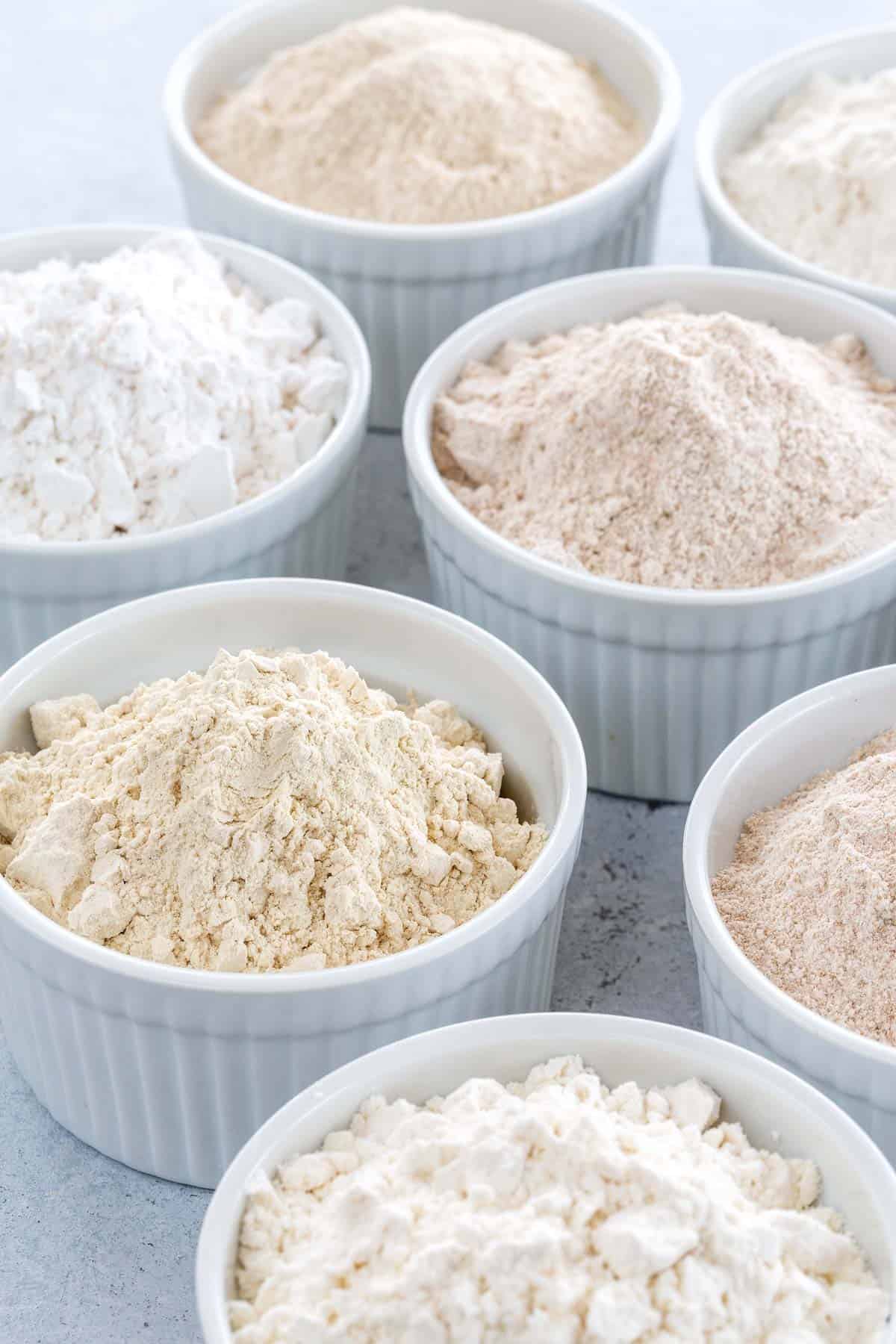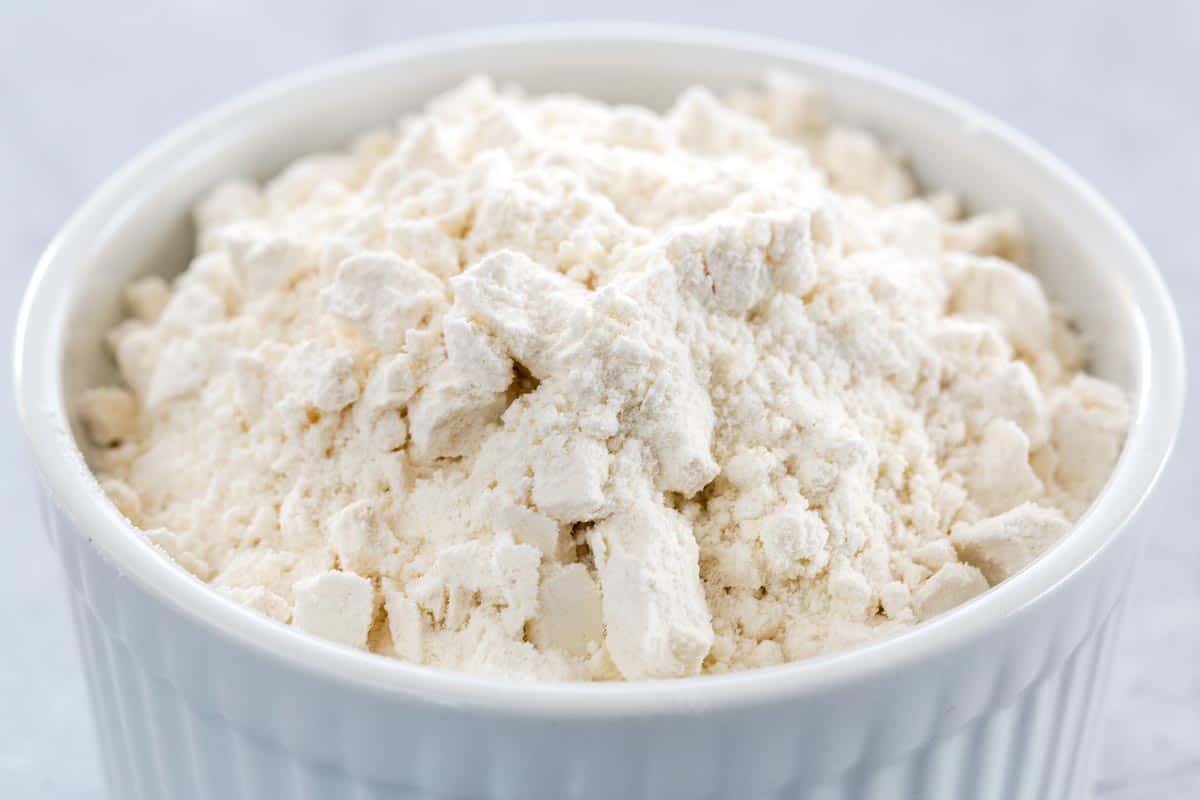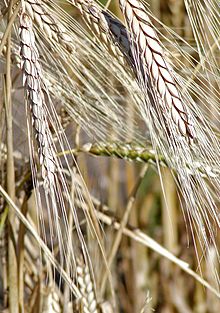A quick guide on how to select flours
I have been learning about Kamut flour from The Food Nanny who lives and dies by baking with Kamut. This brought me to some research and table conversations about the various kinds of flours and benefits of each. I have always known about all purpose flour, bread flour, and whole wheat flour, but have come to understand more about various types of flour and the role of gluten in the texture of various types of food. Here is a quick guide on how to select flours for various recipes.
This article does not cover every type of flour available, but it is a go to list for you to reference when a less specific recipe calls for flour. This will help you determine the benefits and uses of the most common varieties.

All Purpose Flour
All-purpose flour lasts longer in your pantry than other flours. It works well in cookies, breads, waffled, pancakes, pizza and pasta! This is why it is called all purpose flour! The protein levels determine how it performs in your baked goods, so check the varied levels between store brands and Gold-Medal brand, for example. I like to go with Gold-Medal brand when I can!
Kamut Flour
This flour is known for being pure, never genetically altered. It does contain gluten, but many people with gluten intolerance have reported that Kamut flour does not affect them like other glutens. They claim it is more easily digestible. The Food Nanny website reports that Kamut flour has “11.1 grams of fiber and 14.5 grams of protein per 100 grams according to USDA data.” It has a high mineral concentration with 20-40% more protein than other wheats. According to Breadtopia.com “It has a higher lipid to carbohydrate ratio, which means the grain produces greater energy and has a natural sweetness to counterbalance the occasional bitterness present in traditional wheat.”
Whole Wheat Flour
This flour results in a thicker, denser product than all purpose flour. It requires a resting time before you bake, to give the batter time to soften the germ in the flour before baking. Whole wheat flour can be used in cookies, bread, waffles, pizza and pasta- just remember to give it that resting time!
Cake Flour
Best used for CAKES! This gives your product a spongy, airy texture. The flour is milled extensively and has low protein. Cake flour is good for all types of cakes including pound cakes and angel food cakes!
Bread Flour
This flour is high in protein and gives a lot of gluten to give you a chewy product. I personally use it for artisan bread, breads with yeast and it is also good for bagels!

Self Rising Flour
This is what I call the “cutting corners” flour! It has baking powder and salt built into it. Do not substitute this for other flours, it is inherently different. I have used this flour for a 3 ingredient biscuit recipe!
Bleached Flour
This is white flour, treated with benzoyl peroxide or chlorine to remove the yellow color from after milling for a consistent bright white color! Bleaching changes the scientific structure of the starches and protein, making them more absorbent and making the protein bind less tightly together. The process makes the dough less sticky and easier to work with.

With all these various types of flour, we must understand the role of protein in baking and cooking. Jessica Gavin says that “Mixing flour and water together hydrates and activates the insoluble wheat proteins, glutenin and gliadin, creating gluten bonds that give structure and elasticity to bread, cakes, cookies, pizza dough, and pasta. Each type of flour has different levels of wheat protein, which determines the gluten forming potential. Also, the strength of gluten formation is also affected by the intensity and length of mixing. That’s why some directions say “gently fold,” or “do not overmix.”
This is why if you overmix, what should have been a tender bread loaf, turns out as hard as a hockey puck! I hope you learned something about protein and which flour to use in which situation. Education is power!
blog comments powered by Disqus
This article does not cover every type of flour available, but it is a go to list for you to reference when a less specific recipe calls for flour. This will help you determine the benefits and uses of the most common varieties.

All Purpose Flour
All-purpose flour lasts longer in your pantry than other flours. It works well in cookies, breads, waffled, pancakes, pizza and pasta! This is why it is called all purpose flour! The protein levels determine how it performs in your baked goods, so check the varied levels between store brands and Gold-Medal brand, for example. I like to go with Gold-Medal brand when I can!
Kamut Flour
This flour is known for being pure, never genetically altered. It does contain gluten, but many people with gluten intolerance have reported that Kamut flour does not affect them like other glutens. They claim it is more easily digestible. The Food Nanny website reports that Kamut flour has “11.1 grams of fiber and 14.5 grams of protein per 100 grams according to USDA data.” It has a high mineral concentration with 20-40% more protein than other wheats. According to Breadtopia.com “It has a higher lipid to carbohydrate ratio, which means the grain produces greater energy and has a natural sweetness to counterbalance the occasional bitterness present in traditional wheat.”
Whole Wheat Flour
This flour results in a thicker, denser product than all purpose flour. It requires a resting time before you bake, to give the batter time to soften the germ in the flour before baking. Whole wheat flour can be used in cookies, bread, waffles, pizza and pasta- just remember to give it that resting time!
Cake Flour
Best used for CAKES! This gives your product a spongy, airy texture. The flour is milled extensively and has low protein. Cake flour is good for all types of cakes including pound cakes and angel food cakes!
Bread Flour
This flour is high in protein and gives a lot of gluten to give you a chewy product. I personally use it for artisan bread, breads with yeast and it is also good for bagels!

Self Rising Flour
This is what I call the “cutting corners” flour! It has baking powder and salt built into it. Do not substitute this for other flours, it is inherently different. I have used this flour for a 3 ingredient biscuit recipe!
Bleached Flour
This is white flour, treated with benzoyl peroxide or chlorine to remove the yellow color from after milling for a consistent bright white color! Bleaching changes the scientific structure of the starches and protein, making them more absorbent and making the protein bind less tightly together. The process makes the dough less sticky and easier to work with.

With all these various types of flour, we must understand the role of protein in baking and cooking. Jessica Gavin says that “Mixing flour and water together hydrates and activates the insoluble wheat proteins, glutenin and gliadin, creating gluten bonds that give structure and elasticity to bread, cakes, cookies, pizza dough, and pasta. Each type of flour has different levels of wheat protein, which determines the gluten forming potential. Also, the strength of gluten formation is also affected by the intensity and length of mixing. That’s why some directions say “gently fold,” or “do not overmix.”
This is why if you overmix, what should have been a tender bread loaf, turns out as hard as a hockey puck! I hope you learned something about protein and which flour to use in which situation. Education is power!
Sources:
- https://www.thefoodnanny.com/what-is-kamut/#:~:text=Kamut%C2%AE%20wheat%20is%20grown,vitamins%20and%20other%20nutritional%20benefits.
- https://www.jessicagavin.com/different-types-of-flour-and-uses/
- https://breadtopia.com/store/organic-kamut-flour/
 Stefanie Hathaway
Stefanie Hathaway
Monthly Newsletter Contributor since 2016
Email the author! stefanie@dvo.com
